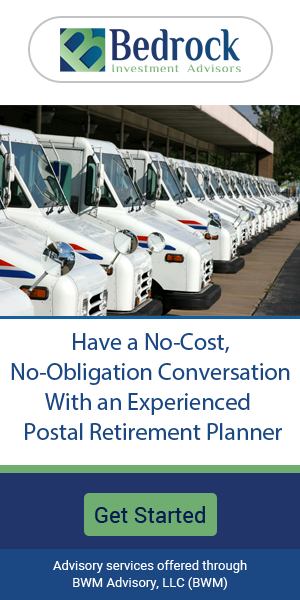Key Takeaways:
-
Early retirement as a federal employee is possible with proper planning, leveraging unique benefits like pensions, TSP, and healthcare options.
-
Understanding eligibility criteria, financial planning, and strategies to reduce penalties can help you achieve your dream retirement timeline.
Breaking Down Early Retirement for Federal Employees
Early retirement often feels like an elusive goal. You might wonder whether it’s realistic given financial constraints, lifestyle needs, and career obligations. For federal employees, however, the journey is slightly different. Thanks to the Federal Employees Retirement System (FERS) and associated benefits, achieving early retirement might be more achievable than you think—with the right strategy in place.
What Qualifies as Early Retirement?
- Also Read: The Best FEHB Plans for 2025: Which One Fits Your Lifestyle and Budget the Best?
- Also Read: Special Retirement Options for FAA and LEO Employees: Are You Taking Advantage of What’s Available?
- Also Read: Federal Employee Benefits You Didn’t Know Could Give Your Wallet a Serious Boost in Retirement
-
Minimum Retirement Age (MRA): Varies between 55 and 57, depending on your year of birth. The MRA applies to regular FERS employees seeking standard retirement.
-
MRA+10 Rule: Allows retirement once you meet your MRA with at least 10 years of service, but there’s a significant penalty: a 5% reduction in your annuity for each year you’re under 62.
-
Special Provisions: Certain categories, such as law enforcement officers and air traffic controllers, can retire earlier due to mandatory age limits and higher pension multipliers.
Why Federal Employees Have an Advantage
Federal employees have access to several benefits that make early retirement uniquely feasible compared to the private sector. These include:
1. Defined Pension Plans
Unlike most private-sector jobs, FERS offers a pension calculated based on years of service and your high-3 salary average. Even with penalties for early retirement, the annuity provides a steady income stream.
2. Thrift Savings Plan (TSP)
The TSP, a retirement savings and investment plan, is comparable to a 401(k) but with lower fees and automatic government contributions. With careful planning, your TSP can supplement your pension and Social Security.
3. Health Benefits
The Federal Employees Health Benefits (FEHB) program allows retirees to continue their health insurance into retirement, provided you’ve been enrolled for at least five years before retiring. This ensures medical expenses remain manageable.
4. Social Security Integration
While most federal employees contribute to Social Security, you can claim benefits starting at age 62. Combined with your FERS pension and TSP withdrawals, Social Security adds another layer of financial security.
Crunching the Numbers: Can You Afford It?
Early retirement requires a detailed financial plan. Let’s examine some key steps:
Step 1: Estimate Your Retirement Income
Federal employees have three primary sources of retirement income: FERS annuity, TSP, and Social Security. Use online calculators or consult a financial advisor to project:
-
FERS Pension: Based on your years of service and high-3 salary. For example, 20 years of service at a $100,000 salary average would result in an annual annuity of about $20,000 (at a 1% multiplier).
-
TSP Withdrawals: Plan for a sustainable withdrawal rate, typically around 4% annually, to ensure longevity of funds.
-
Social Security: Consider whether delaying benefits beyond age 62 might increase your long-term financial stability.
Step 2: Account for Healthcare Costs
Healthcare can be a significant expense in early retirement. If you’re under 65 and ineligible for Medicare, FEHB remains crucial. While premiums and out-of-pocket costs vary, budgeting adequately for healthcare ensures peace of mind.
Step 3: Address Early Retirement Penalties
If you’re retiring before 62, the MRA+10 penalty can significantly reduce your pension. Some strategies to mitigate this include:
-
Accumulating 30 years of service to retire at your MRA without penalties.
-
Using your TSP to bridge income gaps until Social Security eligibility.
Strategizing for an Early Exit
Here’s how you can make early retirement a reality:
Maximize TSP Contributions
Start contributing the maximum allowable amount to your TSP as early as possible. For 2025, the contribution limit is $23,000, with an additional $7,500 for those aged 50 or older. Taking full advantage of matching contributions from your employer boosts your retirement savings significantly.
Leverage Catch-Up Contributions
If you’re over 50, catch-up contributions allow you to supercharge your retirement savings. These extra contributions can make a substantial difference if you’re planning to retire early.
Explore the FERS Special Retirement Supplement
If you retire before 62 with at least 30 years of service or under special provisions, you may qualify for the FERS Special Retirement Supplement. This benefit bridges the gap until you’re eligible for Social Security, providing extra financial stability.
Evaluate Voluntary Early Retirement Authority (VERA) Options
During periods of workforce restructuring, federal agencies may offer VERA to eligible employees. This option allows you to retire early without penalties, even if you haven’t met the standard age and service requirements.
The Role of Lifestyle Adjustments
Early retirement isn’t just about finances. You’ll also need to consider:
Downsizing and Simplifying
Reducing your living expenses can make early retirement more attainable. Downsizing your home, cutting discretionary spending, and paying off debts can free up resources for your retirement goals.
Staying Active and Engaged
An active lifestyle improves your health and reduces healthcare costs over time. Volunteering, pursuing hobbies, or even taking on part-time work can provide purpose and supplemental income.
Navigating the Challenges
Retiring early comes with hurdles that require careful planning:
-
Inflation Risks: Over time, inflation erodes the purchasing power of fixed incomes. Building a diversified portfolio with TSP investments in inflation-protected securities or equities can help mitigate this.
-
Longevity Risks: With advances in healthcare, you’re likely to live longer. Ensure your retirement savings last by balancing withdrawals and maintaining a conservative spending strategy.
-
Healthcare Uncertainty: Plan for rising healthcare costs by choosing the right FEHB plan and coordinating with Medicare when eligible.
When Should You Start Planning?
The earlier you begin planning for retirement, the more options you’ll have. Here’s a suggested timeline:
-
10+ Years Before Retirement: Focus on maximizing TSP contributions, eliminating debt, and projecting future expenses.
-
5-10 Years Before Retirement: Begin fine-tuning your financial plan, considering factors like early retirement penalties and healthcare costs.
-
1-5 Years Before Retirement: Review your FERS pension estimates, calculate Social Security benefits, and assess FEHB options to ensure seamless coverage.
Is Early Retirement Right for You?
Early retirement isn’t for everyone. It requires discipline, foresight, and adaptability. Consider your motivations, lifestyle goals, and financial readiness before taking the leap. Do you want to travel, spend more time with family, or embark on a new chapter of personal growth? Answering these questions can clarify your path.
Turning Dreams into Reality
Achieving early retirement as a federal employee is far from a pipe dream. With the right approach, you can navigate the complexities of FERS, TSP, and healthcare to create a retirement plan tailored to your goals. Remember, early retirement isn’t just about leaving work—it’s about embracing a new phase of life with confidence and security.












